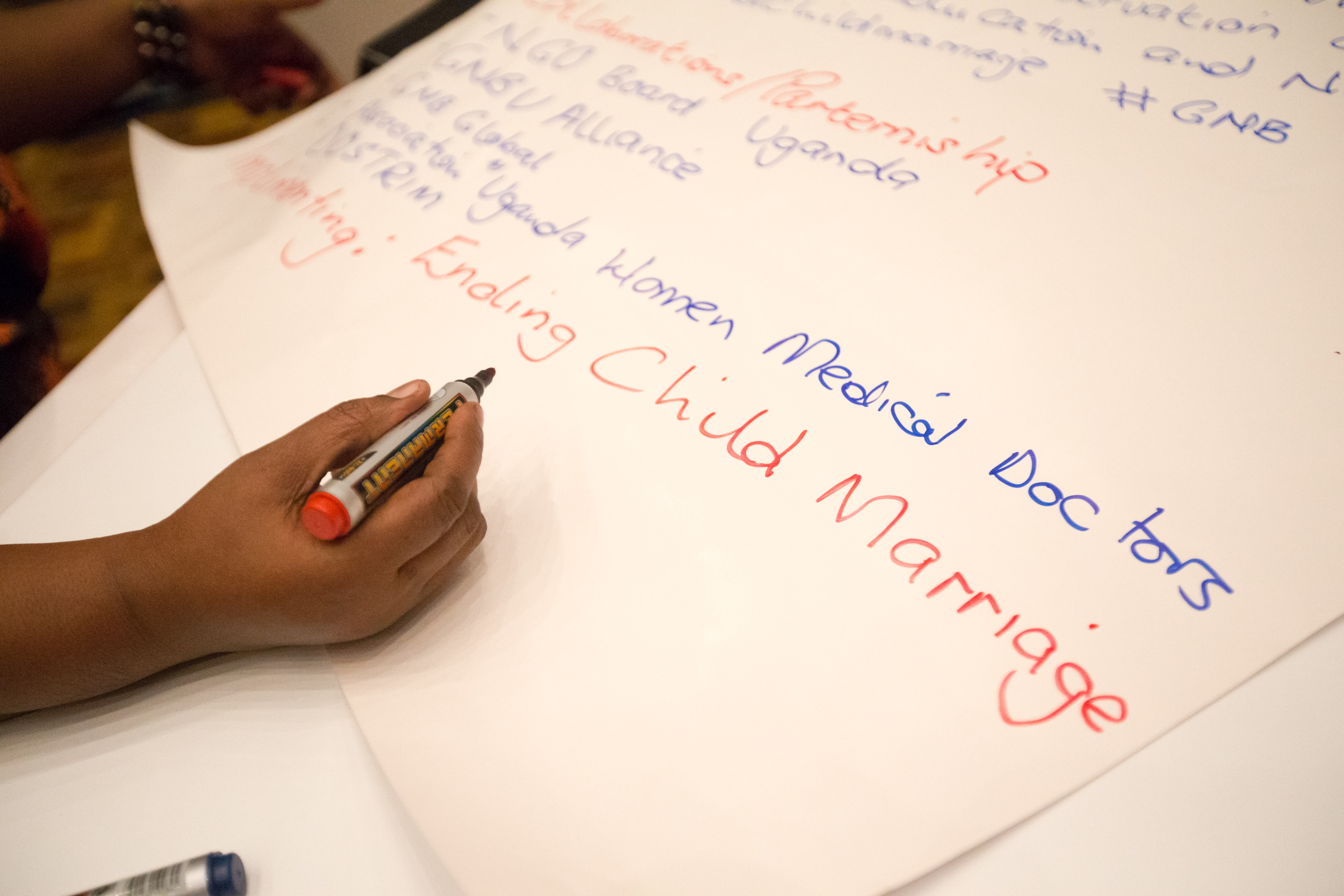Summary: Study of grantees understanding and use of adaptive management
Adaptive Managament
- Adaptive management (AM) can be defined as a systematic process for continually improving the management and implementation of development programs by learning from previous or ongoing implementations.
- Adaptive management requires the institutionalization of a process that can continuously monitor implementation, regularly harness lessons through reflective practice and adapt activities and management in response, and change overall programs as required.
- This study was carried out to assess grantees and grant agent level of understanding of adaptive management as a programming approach and a method of risk mitigation, how they have applied adaptive management strategies to improve project implementation and how can this be used as a source of learning during project implementation in addition to providing recommendations on how adaptive management can be improved in EOL project implementation.
This study mainly aimed to look at adaptive management in the program cycle (throughout Program Cycle processes, including strategy, project, and activity design and implementation) and to look at the Enabling Conditions: how an organization’s culture, business processes, and resource allocation support adaptive management. It explores elements of adaptive management that correspond to the objectives of the study as follows:
1) Assess grantees’ level of understanding of adaptive management as a programming approach and a method of risk mitigation Methodology.
2) Examine how adaptive management has been applied in EOL project implementation thus far.
3) Explore ways in which an adaptive management approach can be used as a source of learning during project implementation.
4) Propose ways in which the application of adaptive management can be improved in EOL project implementation.
Objective 1: Assess grantees’ level of understanding of adaptive management as a programming approach and a method of risk mitigation
Methodology:
The researchers asessed whether the EOL program, GMU, and HESA RMU have a culture of openness, continuous learning, reflection, and improvement. This assessment looked at actual practices and perceptions of field-based staff and project officers. In addition, they looked at processes to assess knowledge management and decision-making process – the ability to distill, share and disseminate knowledge and the awareness among grantees/ employees of the decision-making process.
Summary of findings:
Understanding of adaptive management as a programming approach among the selected sample of grantees was linked to continuous learning, the ability to adjust implementation and inform decision making to reach the intended objectives based on analysis and assessment of the context and flexibility in management.
RMU HESA was perceived to have a culture of openness where grantees feel comfortable sharing their opinion and ideas and is perceived to be receptive to proposed changes to projects and encourage grantees to provide feedback. The HESA RMU-Oxfam Denmark is also seen as an agency that is very “flexible“.
Recommendations:
Enhance Capacity building on adaptive management tools, particularly for finance and admin teams with a focus on pro-active adaptive management which scans the horizon for opportunities and risks, and it adapts to take advantage of them.
It explicitly plans for experimentation and regular upgrading of the strategies; it considers learning and the reduction of uncertainty and imperfect knowledge as one of the key objectives of the management effort.
Objective 2: Examine how adaptive management has been applied in EOL project implementation thus far
Methodology:
Two elements were assessed : Collaboration and how internal and external collaboration of grantees and grant agent, assessing the ability to collaborate with other departments within the entity, the ability to collaborate with learning partners, other grantees, to what extent they consult their stakeholders and their ability to build coalitions.
In addition, researchers looked at Adaptation and the best practices and lessons learned in adopting change in the design, implementation, budgeting or monitoring of EOL programs and the process followed to adapt the desired change.
Summary of findings:
Adaptive management practices are seen to be adapting to context changes, constant learning, and flexibility. The management and coordination of EOL program is deemed to be collaborative, adaptive, and understanding of the emerging needs of EOL Program implementation.
There is a simple process in place for grantees to make changes to the program implementation. Most grantees do take the time to pause and reflect on what is going well and what could be improved and to share the knowledge gained with their coalition members and regional coalitions. HESA RMU was found to be encouraging learning practices through organizing periodic online and offline regional learning and reflection workshops. Compared to other donors, the majority of grantees believe that EOL provided the highest level of flexibility and ability to adapt which is seen to be a necessity for advocacy work. However, it is important to enforce structure to tighten the feedback loop between data and action: adaptive management aims for double learning more than just correcting deviations in planned versus actual.
Recommendations:
Introducing outcome harvesting tool as one of the mechanisms to capture outcomes, institutionalization of adaptive management further by developing context analysis tools/ regular reviews of TOC. Further use of Scenario planning as a tool to map and plan different scenarios on how change may happen, and to examine the program’s role in making future events happen, enforcing structure to tighten the feedback loop between data and action. In addition to the introduction of quarterly planning cycles where data and information gathered in the previous quarter can be used to inform the next planning cycle and update the TOC, project design and activity implementation strategies.
Objective 3: To explore ways in which an adaptive management approach can be used as a source of learning during project implementation
Methodology:
The team assessed the grantees’ ability to use evidence to build their pathways for change, their ability to use learning to inform decision making, the frequency and habit of reviewing their theory of change, the risks and opportunities through scenario planning, how they assess the efficiency of their data collection tools and monitoring and evaluation data quality, on whether they have a mechanism to monitor unintended outcomes (outcome harvesting) and reflect.
Summary of findings:
This study revealed that there is a culture of collaborating, learning and openness among grantees and HESA RMU. The EOL program has adopted Re-active Adaptive Management that relies on regular monitoring and reflection activities to detect unpredicted challenges and, when needed, to adjust planned actions to remain on track to achieve the desired program outcomes. EOL provided learning opportunities, platforms for knowledge sharing and encouraged peer learning among grantees.
Recommendations:
Encouraging further engagement on knowledge sharing hubs and investing in knowledge transfer on adaptive management and learning to other partners in targeted countries (EOL to become an influencer in this field), encouraging further engagement from learning partners to provide mentorship and support during implementation and continuous learning on adaptive management tools. RISP and GISP could be further engaged in the monitoring process. Based on the stated objective, what was assessed and findings, it would also be interesting to enable grantees distill learnings from AM practices and applying that knowledge to improve project implementation. This means AM will be expected to go beyond changing implementation strategies and budgets and document learnings from such changes and apply them to improve the remaining part of the project.
Objective 4: Propose ways in which the application of adaptive management can be improved in EOL project implementation
Summary of findings:
Grantees were able to articulate well their understanding of adaptive management but were less able to provide concrete examples of how adaptive management is implemented in practice.
There is a culture of collaborating, learning and openness among grantees and HESA RMU. The EOL program relies on regular monitoring and reflection activities to detect unpredicted challenges and, when needed, to adjust planned actions to remain on track to achieve the desired program outcomes.
EOL provided learning opportunities, platforms for knowledge sharing and encouraged peer learning among grantees. However, it is important to enforce structure to tighten the feedback loop between data and action and to institutionalize practicing adaptive management.
Recommendations:
A roadmap that looks at reviewing seven steps for improving adaptive management is recommended as a systematic tool to introduce improvement. This roadmap is useful in a multi-organizational, multi-country set-up where efficient design is needed to align top-down structuring and requirements with bottom-up diversity and divergence.
This roadmap of seven steps is introduced by HIVOS. These 7 steps can come in a different order and it depends on the user to assess which of the seven steps needs to be undertaken.
- Annual Review results/ outcome statements: using outcome harvesting to continuously monitor intended/ unintended outcomes (whether positive or negative or within the sphere of control (outputs) or within the sphere of influence (outcomes).
- Learning questions: Learning from the monitoring data; Learning about the critical Make-or-Break assumptions in the Theory of Change; and Developing learning topics/ questions and learning agenda at each level
- Changes in context: Identifying possible trends and signs about emerging shifts in the environment, followed by analyzing and collective sense-making of possible implications for the Theory of Change (is there a need to revise intervention strategies, desired outcomes, pathways, assumptions?
- Theory of change: Reviewing the theory of change was not seen as a frequently recommended practice. Constant validation of pathways to change and evidence in the TOC is important.
- Capacity assessment and development: What capacities are available amongst the alliance members and partner organizations in relation to the (revised) Theory of Change; What would be Capacity Development needs in view of the capacity assessment results?
- Strategies and interventions: With the outcomes achieved and learning so far, what can you say about your interventions and strategies? What worked? Why? Is there a need for adjustment?
- Annual reflection and Planning Who should take part in the annual planning and reflection?
Want to know more?
Read the full study on application of Adaptive Management in EOL project implementation in HESA or contact regional MEL Advisor Nickson Ahimbisibwe, ahi@oxfam.dk

